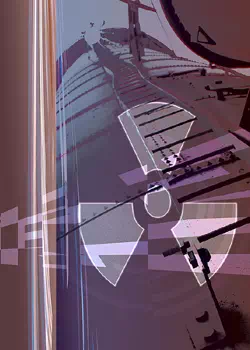 Radiological Wastes in Healthcare Facilities
Radiological Wastes in Healthcare Facilities
- Properties
- Risks
- Compliance requirements
- Alternatives
- Disposal of radiological wastes
- More resources
Properties
Radiological wastes are useful precisely because they are lethal. Rapidly dividing cells more susceptible to radiation damage than non-dividing cells. This property makes radiological agents useful for cancer treatment.
Radioactivity results from reactions involving changes in atomic nuclei. A nuclear reaction typically results in the release of about a million times more energy per atom than a typical chemical reaction (which involves changes in the electron distribution around the nuclei, but leaves the nuclei themselves unchanged).
Radioactive substances are generally prepared by bombarding stable materials with high energy particles, transforming some of the nuclei into unstable states. To be useful as a therapeutic agent, the unstable nuclei must persist for long enough to be administered to a patient and to act on the target tissue. The rate at which unstable nuclei emit radiation and decay into more stable states depends almost entirely on the composition of the material. The rate is expressed in terms of "half-life", the length of time needed for half of a given amount of the material to decay. Therapeutic materials are often chosen to have half-lives in the range of several days to several weeks. This allows enough time for transportation and storage of the material, but also allows the material to decay into a less hazardous form in a convenient period of time.
Two additional properties besides half-life are important for understanding the differences among various radioactive materials.
Particle type. When nuclei decay, they typically emit a low mass, fast moving particle. Most radioactive materials encountered in hospitals emit one of three types of particle, called (for historical reasons) alpha, beta, and gamma. The emitted particles differ in their ability to penetrate other materials.
- Alpha particles (helium nuclei) are strongly scattered by other nuclei, and thus have poor penetrating power. A few layers of cloth can stop alpha particles. The greatest danger from alpha emitters occurs when alpha-emitting material is inhaled or ingested.
- Beta particles (electrons) are intermediate.
- Gamma particles (high frequency packets of light energy, or photons) are less strongly scattered, and thus penetrate other materials effectively. Many feet of lead may be required to stop gamma particles.
Energy. Depending on the isotope, the emitted particles will carry a certain quantity of energy. [add enough background mtl to lead into risk discussion]
Need to define "isotope".
Additional benefit of using a highly active, short-half life isotope -- a little goes a long way -- can minimize quantity as well as storage time on site.
Risks
Measures of radiation exposure
Handling risks
Patients with implants (National Cancer Institute: fact sheet on radiation therapy for patients)
Security concerns -- how credible is "dirty bomb source material" issue?
An informative and entertaining treatment of radiation hazards is available at http://musr.physics.ubc.ca/~jess/p200/radhaz/radhaz.html (This resource is particularly recommended for readers who may wonder how a discussion of radiation hazards can be entertaining, but who are open to the possibility.)
Compliance requirements
licensing
from sector notebook:
- mixed wastes under RCRA
from comments to sector notebook by Dan Schultheisz (email from Seth, 1/27/05, 11:32 AM):
- common for licenses to allow storage for 10 half-lives
- possible conditional RCRA exemption (issued 5/01) to allow storage of mixed wastes for over 90 days, available in a few states
- radiological wastes can be mixed with RMW as well as RCRA
Alternatives
list common isotopes in use in healthcare
any risk-benefit comparisons of isotopes available?
alternative therapies?
desirability of separating wastes
Disposal of radiological wastes
decay on site
options for mixed waste
More resources
Washington State Department of Health, Office of Radiation Protection:
- index page
- hospital-specific information (frequent problems, most common violations, etc.)
These NRC resources may be helpful:
- http://www.nrc.gov/materials/miau/med-vet.html
- http://www.nrc.gov/materials/miau/vet-toolkit.html
- http://www.nrc.gov/materials/medical.html



